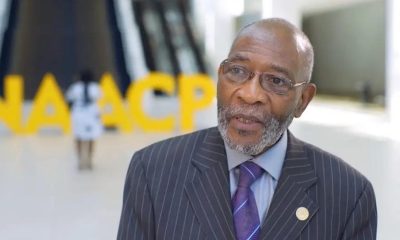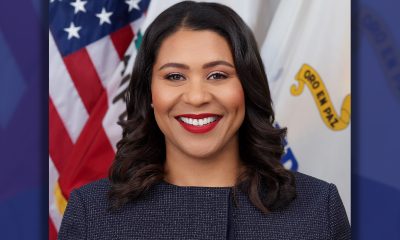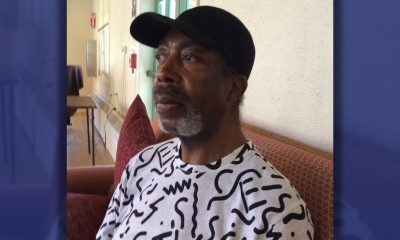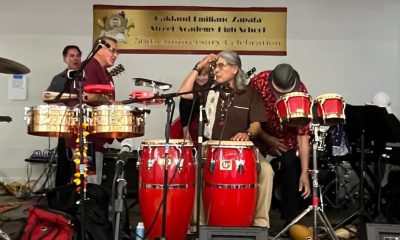Bay Area
Black Leaders: Spending Must Include Minorities as State Prepares for Billions in Fed Cash
The leaders say California has not lived up to its commitment to equitably include African American contractors and businesses in the state’s ongoing infrastructure investments. The state has also failed, they say, to include Black-owned institutions like newspapers and other media when informing the public about open bids for taxpayer-funded contracts, hiring, and other economic opportunities.
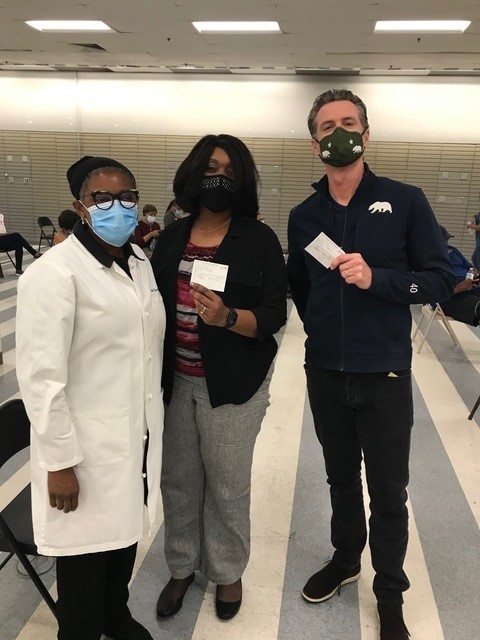
Some African American leaders in California are concerned. As the state looks forward to receiving billions in new federal funding this year for development projects, they fear African American and other minority-owned businesses and their workers will be left out.
The leaders say California has not lived up to its commitment to equitably include African American contractors and businesses in the state’s ongoing infrastructure investments. The state has also failed, they say, to include Black-owned institutions like newspapers and other media when informing the public about open bids for taxpayer-funded contracts, hiring, and other economic opportunities.
John Warren, the publisher of the San Diego Voice & Viewpoint, the city’s largest African American-owned publication, said that there is little-to-no community outreach when government agencies allocate funds for contracts and announce job opportunities.
“The notices for the jobs are not being advertised in our Black and Brown newspapers,” Warren said. “If they don’t reach out to us from a standpoint of being proactive inclusive, we won’t benefit from these jobs.”
On March 31, during a visit to Pennsylvania, Pres. Joe Biden announced a $2 trillion infrastructure federal spending plan called the “American Jobs Plan.”
He says, if the U.S. Congress approves it, the proposal would create 19 million jobs. In addition, it would invest in research and development that helps the United States “out-compete” China and other countries around the world.
Biden also promised that his plan would also address existing racial disparities that have resulted from the government’s historical neglect or isolation of African Americans and other minorities when undertaking large-scale national development projects.
“Inaction is not an option,” Biden said, chiding the U.S. Congress to pass the bill.
“It is an 8-year program that invests in our roads, our bridges, broadband, airports, ports, fixing our water systems. It is going to repair our V.A. hospitals across the country – many of them more than 50 years old,” Biden said.
Responding to Biden’s announcement, Gov. Gavin Newsom sounded upbeat.
“President Biden put forward a transformative vision for a healthier and cleaner future for our country, with unparalleled investments in infrastructure and clean energy which will create millions of high-paying jobs along the way,” said Newsom.
Newsom said California is “uniquely positioned to benefit from these investments.”
The governor mentioned how California will likely use some of the federal money, citing projects like expanding broadband access; making the state’s electric grid more resilient to wildfires and blackouts, improving schools, hospitals, and housing; expanding clean transportation; and more.
Newsom said the spending will also “lift up opportunities for communities too often overlooked.”
To help get the word out on the infrastructure plan, Newsom and Vice President Kamala Harris toured an Oakland-based facility on Monday morning to emphasize the importance of the American Jobs Plan. Harris held a listening session with local leaders, including a small business owner who received resources and funding from the Community Development Financial Institutions Fund.
But even though the California state government has already set aside lump sums of money to invest in the building and maintenance of state highways, bridges, and additional mass transit infrastructure, Black leaders say African American companies have yet to equitably benefit from those projects.
The overall infrastructure budget for Caltrans, for example, includes a $273 million investment from Senate Bill 1, passed in 2017, to repair the state’s roads and various transportation systems. The California Department of Transportation (Caltrans) is responsible for managing and distributing $491 million in funds, allocated by the California Transportation Commission. Caltrans is also in charge of distributing job opportunities including construction contracts and jobs across the state.
Gene Hale, chairman of the Greater Los Angeles African American Chamber of Commerce, said the state’s transport agencies need to increase the spending among minority groups, “to make a lasting impression in Black and Latino communities.”
“Caltrans should also increase their small business goals on state-funded highway projects, and also continue to do more outreach to reach these disadvantaged communities,” said Hale.
Toks Omishakin, the director of Caltrans – who Newsom appointed in September 2019 — said his department has opened the Caltrans Office of Race and Equity (CORE), which works closely with the Office of Civil Rights for equity efforts in August 2020.
The transportation agency also hosted a virtual business summit to support local businesses.
The inaugural virtual small business summit included 800 businesses from across the state networking with federal government officials and representatives from banking institutions.
Despite the success of the event, Omishakin said that Caltrans struggled to get participation from Black and Latino business owners.
“One of the things we need to do is engage more with the communities,” Omishakin said. “We need to reach out more to people and businesses to let them know what opportunities exist.”
According to the Economic Policy Institute, the unemployment rate for Black Californians in the last quarter of 2020 was 15%, the highest in the state. Latinos were a close second at 13% within the same fiscal quarter.
Warren said using trusted messengers like established Black-owned media publications around the state is a practical way to promote equitable hiring processes and distribution of funds.
“They have to put money in inclusive media for community outreach — the same way they did with the Census,” Warren said. “There has to be a directive that these jobs be inclusively placed before us and made available to us.”
Omishakin, Caltrans director, said that ethnic media is a viable option for community engagement in Black and Latino communities.
“We’re going to step up even more on this type of engagement,” Omishakin said. “We know that some communities rely on ethnic media to get our information, so we’re going to do more to get the engagement we were looking for.”
Omishakin said Caltrans is committed to boosting equity in its funding programs and hiring processes.
One important way to address issues of inclusion issues of diversity and equity across the board, “is through our business practices, and how we give more opportunity to marginalized businesses,” said Omishakin.
Hale, who is also the CEO of G&C Equipment Corporation, a construction equipment, material, and supplies company said the transportation agency must be willing to set up goals that prioritize minority businesses for government contracting jobs in predominantly Black and Latino communities.
Hale says he also supports direct outreach to African American businesses.
The businessman and civic leader said Caltrans needs to design programs that, “specifically reach the disadvantaged minority communities and business people.”
Activism
S.F. Black Leaders Rally to Protest, Discuss ‘Epidemic’ of Racial Slurs Against Black Students in SF Public School System
Parents at the meeting spoke of their children as no longer feeling safe in school because of bullying and discrimination. Parents also said that reported incidents such as racial slurs and intimidation are not dealt with to their satisfaction and feel ignored.

By Carla Thomas
San Francisco’s Third Baptist Church hosted a rally and meeting Sunday to discuss hatred toward African American students of the San Francisco Unified School District (SFUSD).
Rev. Amos C. Brown, president of the San Francisco NAACP and pastor of Third Baptist Church, along with leadership from local civil rights groups, the city’s faith-based community and Black community leadership convened at the church.
“There has been an epidemic of racial slurs and mistreatment of Black children in our public schools in the city,” said Brown. “This will not be tolerated.”
According to civil rights advocate Mattie Scott, students from elementary to high school have reported an extraordinary amount of racial slurs directed at them.
“There is a surge of overt racism in the schools, and our children should not be subjected to this,” said Scott. “Students are in school to learn, develop, and grow, not be hated on,” said Scott. “The parents of the children feel they have not received the support necessary to protect their children.”
Attendees were briefed last Friday in a meeting with SFUSD Superintendent Dr. Matt Wayne.
SFUSD states that their policies protect children and they are not at liberty to publicly discuss the issues to protect the children’s privacy.
Parents at the meeting spoke of their children as no longer feeling safe in school because of bullying and discrimination. Parents also said that reported incidents such as racial slurs and intimidation are not dealt with to their satisfaction and feel ignored.
Some parents said they have removed their students from school while other parents and community leaders called on the removal of the SFUSD superintendent, the firing of certain school principals and the need for more supportive school board members.
Community advocates discussed boycotting the schools and creating Freedom Schools led by Black leaders and educators, reassuring parents that their child’s wellbeing and education are the highest priority and youth are not to be disrupted by racism or policies that don’t support them.
Virginia Marshall, chair of the San Francisco NAACP’s education committee, offered encouragement to the parents and students in attendance while also announcing an upcoming May 14 school board meeting to demand accountability over their mistreatment.
“I’m urging anyone that cares about our students to pack the May 14 school board meeting,” said Marshall.
This resource was supported in whole or in part by funding provided by the State of California, administered by the California State Library via California Black Media as part of the Stop the Hate Program. The program is supported by partnership with California Department of Social Services and the California Commission on Asian and Pacific Islander American Affairs as part of the Stop the Hate program. To report a hate incident or hate crime and get support, go to CA vs Hate.
Bay Area
Mayor London Breed: State Awards San Francisco Over $37M for Affordable Housing
On April 30, Mayor London N. Breed announced San Francisco has been awarded more than $37.9 million in funding from the California Department of Housing and Community Development (HCD) as part of the State’s Multifamily Housing Program (MHP). The HCD loan will provide the final funding necessary for development of Casa Adelante – 1515 South Van Ness, a 168-unit affordable housing project located in San Francisco’s Mission District.

By Oakland Post Staff
On April 30, Mayor London N. Breed announced San Francisco has been awarded more than $37.9 million in funding from the California Department of Housing and Community Development (HCD) as part of the State’s Multifamily Housing Program (MHP).
The HCD loan will provide the final funding necessary for development of Casa Adelante – 1515 South Van Ness, a 168-unit affordable housing project located in San Francisco’s Mission District.
The new development at 1515 South Van Ness Ave. will provide 168 affordable homes to low-income families, formerly homeless families, and persons living with HIV earning between 25-80% of the San Francisco Area Median Income (AMI).
In addition, the project is anticipated to provide family-friendly amenities and ground floor community-serving commercial spaces that preserve the prevailing neighborhood character of the Calle 24 Latino Cultural District.
“This funding unlocks our ability to move on building affordable housing units for families in San Francisco at a crucial time. We understand the level of need for more housing that is accessible, and like the state, the city continues to face a challenging budget cycle,” said Breed. “1515 South Van Ness is a good example of what can be achieved in San Francisco when you have strong community partnerships and an unwavering commitment to deliver on critical needs for our residents.”
“From the beginning of my term as Supervisor, I have fought to bring affordable housing to 1515 South Van Ness” said Supervisor Hillary Ronen. “In the interim, the site has been utilized for homeless services and shelter, and I am thrilled that HCD has recognized the value of this development, and we are finally ready to break ground and bring 168 affordable homes to low income and formerly homeless families in the Mission.”
Owned and occupied by McMillan Electric Company until 2015, the City and County of San Francisco purchased 1515 South Van Ness Avenue in June 2019 with the intent of developing new affordable housing.
In November 2020, the San Francisco Mayor’s Office of Housing and Community Development (MOHCD) released a Multi-site Request for Qualifications (RFQ) seeking qualified developers to build affordable housing on the site, and subsequently selected Chinatown Community Development Corporation (CCDC) and Mission Economic Development Agency (MEDA) in May 2021 to develop the site.
The project is expected to begin construction in winter 2025.
“A strong, long-term push by Mission advocates to make this site 100% affordable is now paying off, with 168 family units that include services and childcare. People of color communities know what they need, and we are excited to be in partnership with a team, consisting of MEDA, CCDC, and MOHCD, that listens,” said Malcolm Yeung, Executive Director at CCDC.
“We are excited to be in partnership with CCDC, yet again, and for the opportunity to develop intergenerational affordable housing in the City’s Mission District,” said Luis Granados, executive director at MEDA.
Increasing housing affordable to lower-income and vulnerable residents is a key priority in the City’s Housing Element which calls for additional funding for affordable housing production and preservation, as well as Mayor Breed’s Housing for All Executive Directive that sets out the steps the City will take to meet the bold goal of allowing for 82,000 new homes to be built over the next eight years.
Tuesday’s funding announcement emphasizes the importance of regional and state collaboration in order to reach our housing and climate goals.
“We are thrilled—not just to bring a project of this size to a community with great need — but to do so with community-based developers and their partners who understand the neighborhood and sensitivities around cultural preservation,” said HCD Director Gustavo Velasquez.
Bay Area
East Bay Regional Park District Issues Rattlesnake Advisory
The East Bay Regional Park District released an advisory today on rattlesnakes, which emerge from winter hibernation in early spring and become more active. Warm weather can bring more potential for rattlesnake encounters with humans and dogs, particularly along trails and roads.
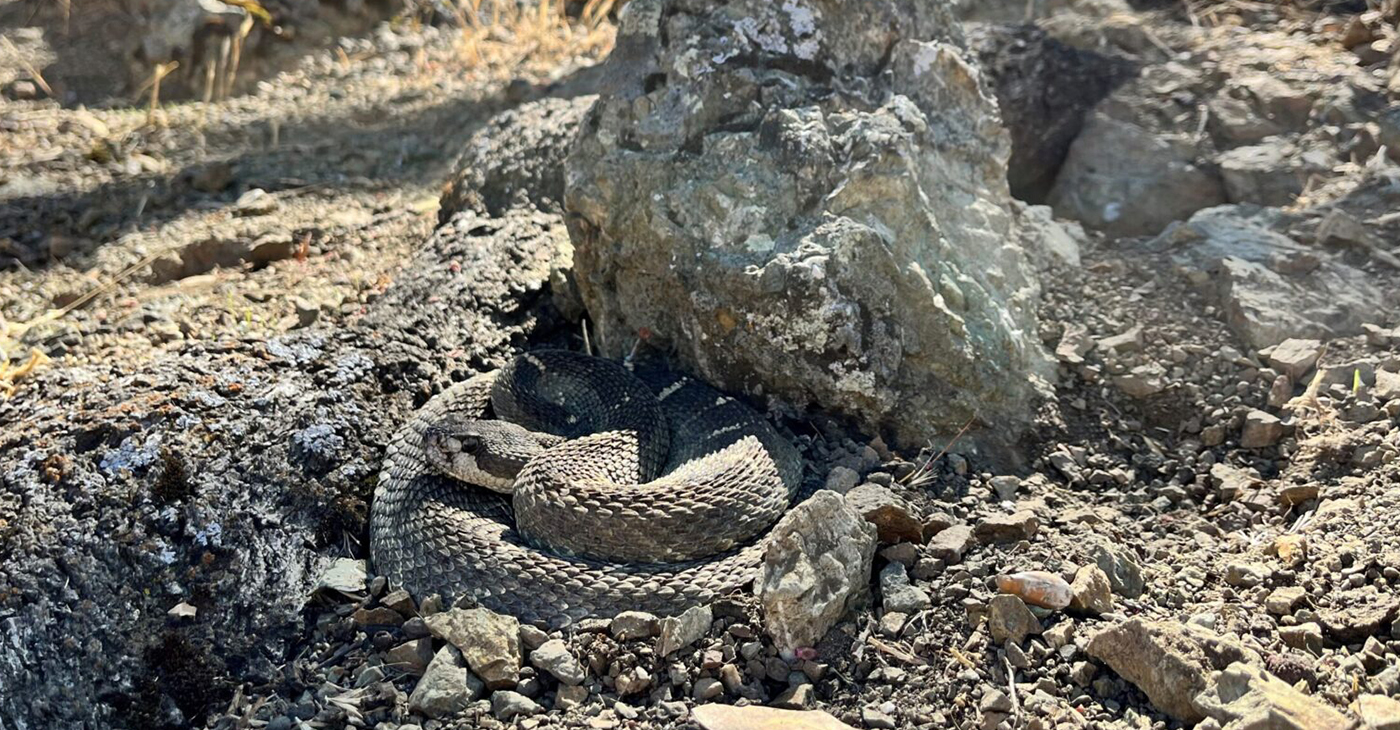
The Richmond Standard
The East Bay Regional Park District released an advisory today on rattlesnakes, which emerge from winter hibernation in early spring and become more active.
Warm weather can bring more potential for rattlesnake encounters with humans and dogs, particularly along trails and roads.
Visitors are encouraged to avoid hiking alone in case of an emergency, to scan the ground ahead as they walk, jog or ride, stay on trails avoiding tall grass, and to look carefully around and under logs and rocks before sitting down. Keep your dog on your leash to be extra safe, park officials said.
If you encounter a rattlesnake, leave it alone – it is unlawful to capture or harm one. Move carefully and slowly away or around it and give it plenty of space, park officials said.
Those who are bitten by a rattlesnake are instructed to stay calm by lying down with the affected limb lower than the heart, then having someone call 911.
Getting medical attention is critical.
Those bitten should not use tourniquets, “sucking,” or snake bite kits. If you are by yourself, walk calmly to the nearest source of help to dial 911, do not run.
If bitten by any other type of snake, wash the wound with soap and water or an antiseptic and seek medical attention.
Not sure what bit you? Check the bite for two puncture marks (in rare cases one) associated with intense, burning pain, which is typical of a rattlesnake bite. Other snakebites can leave marks without associated burning pain.
The Northern Pacific rattlesnake is the species found in East Bay Regional Parks. Snakes are important to the natural environment, helping to control rodents and other reptile populations. But enjoy them from afar.
For more information, download the Park District’s Common Snakes brochure or watch our Gopher Snake or Rattlesnake video to learn how to tell the difference between rattlesnakes and gopher snakes. Additional information is available at ebparks.org/safety/wildlife-encounters.
-

 Community3 weeks ago
Community3 weeks agoFinancial Assistance Bill for Descendants of Enslaved Persons to Help Them Purchase, Own, or Maintain a Home
-

 Business3 weeks ago
Business3 weeks agoV.P. Kamala Harris: Americans With Criminal Records Will Soon Be Eligible for SBA Loans
-

 Activism4 weeks ago
Activism4 weeks agoOakland Post: Week of April 10 – 16, 2024
-

 Community3 weeks ago
Community3 weeks agoAG Bonta Says Oakland School Leaders Should Comply with State Laws to Avoid ‘Disparate Harm’ When Closing or Merging Schools
-

 Activism2 weeks ago
Activism2 weeks agoOakland Post: Week of April 24 – 30, 2024
-

 City Government3 days ago
City Government3 days agoCourt Throws Out Law That Allowed Californians to Build Duplexes, Triplexes and RDUs on Their Properties
-

 Community2 weeks ago
Community2 weeks agoRichmond Nonprofit Helps Ex-Felons Get Back on Their Feet
-

 Community2 weeks ago
Community2 weeks agoOakland WNBA Player to be Inducted Into Hall of Fame

